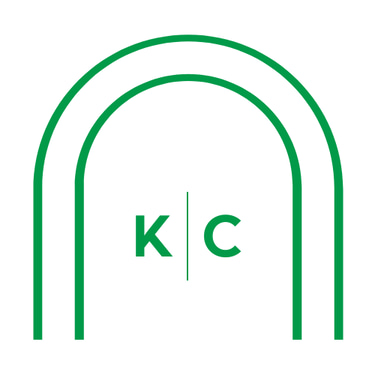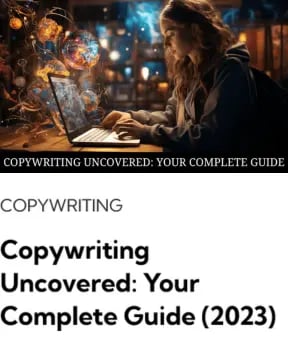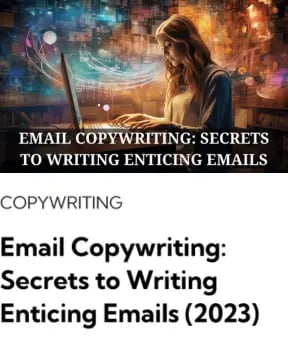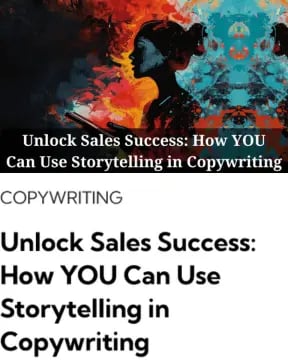How to Write Copy for Your Website (Basics to Beat Your Competition)
Learn how to write copy for your website to beat your competition. Use these copywriting best practices to engage your ideal customers and boost sales.
COPYWRITING
Shane is the founder of Keystone Copywriting.
He's been copywriting, creating content and strategising in SEO for over six years.
The Keystone Copywriting Blog is his outlet for sharing his evolving knowledge.
Author
Shane Curry




Why would you care about writing effective copy for your website?
Here are three reasons off the top of my head:
Increases your revenue and profitability
Enhances market position and competitiveness
Opens up opportunities for expansion and innovation
OK, why would you care about that?
You gain a sense of accomplishment
Financial stability and security for your family
Fulfills personal and professional goals
You might care about writing website copy for any of those reasons. And they’re all valid.
But to get there, you first need to write effective copy for your website.
Throwing words together and publishing won’t do.
Let’s run through the basics of how to write copy for your website. It won’t take long.
Website Copywriting Best Practices: Crafting Copy That Converts
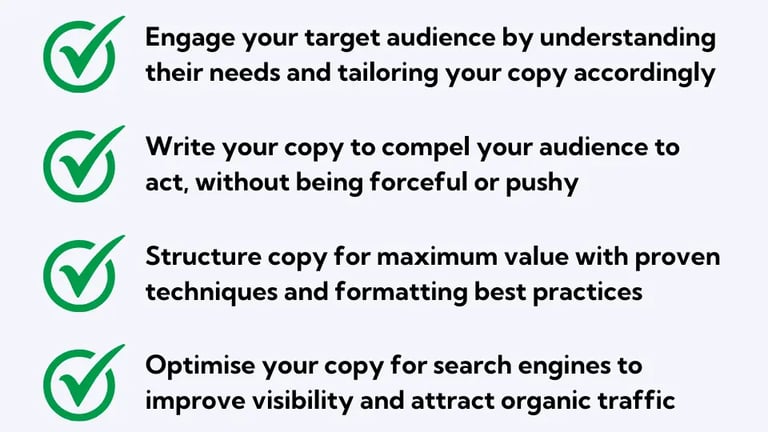

Understanding Your Target Audience
Understanding the target audience is the first thing I do when writing website copy. Because effective copywriting begins with knowledge of who you're writing to.
I always ask the business owner about their ideal customer. Understanding everything they know about their audience is my goal.
Some simple questions can focus on the demographics of the ideal customer.
What gender is your ideal customer?
What is the age range of your ideal customer?
What is the education level of your ideal customer?
What is the average income level of your ideal customer?
Questions like these help you shape your website copy accordingly.
Business owners like you generally have excellent insights into their ideal customers. Understanding your target audience should be easy.
Focus on your ideal customer’s preferences and pain points also. This information helps you create buyer personas - fictional representations of your ideal customers.
You may want to dive deeper into customer research and cover:
Geographic (e.g., city, state, country)
Psychographics (e.g., values, attitudes, interests)
Firmographics (e.g., company, industry, title)
Behavioural (e.g., page views, downloads, signups)
Transactional (e.g., purchase history)
I also like to know how most people land on your website. That knowledge gives me an understanding of the customer journey.
Are they landing on your site after interacting with social media content?
These people are more aware of who you are and what you do. They’re further along in the customer journey, which impacts the copy.
Researching Audience Demographics and Preferences
Not sure how to gain insights into your target audience? Start by analysing your existing customer data - age, gender, location, and purchasing habits.
You can also conduct surveys and interviews to gather more detailed information about their preferences, challenges, and goals.
Additionally, explore online forums, social media platforms, and competitor websites to observe how your target audience engages with content.
Discover what topics they find most compelling or the problems they face most often.
Developing Buyer Personas
Use the data collected from your research to create detailed buyer personas. They represent your ideal customers - write your copy to these people
Give each persona a name, age, occupation, and background story to make them feel more realistic. Identify their key challenges, goals, and motivations.
Keeping these personas in mind helps you craft targeted copy for your ideal customers. You’ll ensure your message addresses their specific needs and resonates with them.
Writing Your Copy to Boost Conversions
Effective copywriting is persuasive without being pushy. You’re not trying to force someone to use your services.
Overly salesy copywriting is amateur hour. Nobody’s buying into it - or buying your products if you rely on it.
Effective copywriting guides your potential customers through the buying journey. The selling should be subtle.
Tell people how amazing your services are without forcing it.
Focus on benefits
Write clearly
Tell them a story
Use powerful words
Be relatable and authentic
Show social proof and testimonials
Give people a clear next step to follow
Focus on benefits, not just features
Business owners like us can get too caught up in what our products or services do. Naturally, we’re excited about our businesses and proud of them.
We can let that pride seep into our website copy. The focus is more on what we do instead of how we help our customers.
Focus on benefits, not just features.
Shifting the focus to benefits moves the spotlight away from us and illuminates the customers. They should always be the star of the show.
Write out all of your features
Attach a benefit to each one
These benefits will be beacons guiding your copywriting.
Write clear and concise messages
Always make sure your website copy is clear. You never want to confuse potential customers.
Because confused readers will leave your site and end up visiting your competitors.
Keep sentences short - without losing the meaning
Break your writing into short paragraphs
Aim for two or three sentences long
Readers will find the copy easier to consume, which holds their interest.
Use subheadings to divide your copy into logical sections. Make it simple for busy readers to scan the page and find what they need.
Use bullet points to highlight benefits and other important information.
Never have large blocks of text on your website. Nobody will read it.
Your goal is to communicate your message clearly to the reader. In the easiest way possible.
Use storytelling to connect emotionally
Storytelling is powerful.
We’ve been using it for 1000s of years. Our love for stories is hardwired into us.
That’s why Hollywood is so successful.
Use storytelling as a tool for writing effective website copy. And I’m not on about “once upon a time” or some epic fable.
Tell stories about how your services benefit your customers. Use case studies and testimonials.
Show website visitors how your business has helped other people overcome challenges or achieve their goals.
Storytelling works wonders for engaging readers and creating an emotional connection with your business. Make your website copy more memorable, relatable, and persuasive with storytelling.
Use powerful, action-oriented language
Your website copy should be assertive. You need to show visitors exactly what you do and how it benefits them.
Don’t use words like:
Might
Could
Possibly
Do use words like:
Will
Ensure
Guarantee
These assertive words are more powerful. You won’t persuade anyone to use your services with wishy-washy language.
Make your copy relatable and authentic
Be yourself when writing your website copy. I see heaps of businesses trying to sound professional on their websites.
Sounding professional isn’t necessarily a bad thing. But when you force using complex sentences and long words to seem “smart and business-like” that’s a problem.
For a start, it confuses your potential customers. Because nobody speaks like that in everyday interactions. People can’t relate to it.
Trying to sound professional also comes off as inauthentic.
Chill out. Use relatable language. Be authentic to your audience.
Use social proof and testimonials
Social proof and testimonials are powerful psychological triggers. Showing evidence that you helped other people influences buying decisions.
Leverage social proof to show how your business benefits your ideal customers.
Customer testimonials
Evidence of results
Reviews
These give your website copy more credibility.
Create strong calls to action (CTAs)
A strong CTA gives readers a clear next step to follow. You need to include strong CTAs to convert website visitors into customers.
Use powerful language that encourages action.
Claim
Secure
Transform
Creating urgency and FOMO (fear of missing out) are effective action triggers.
Claim your free trial - offer ends in 5 hours
Secure your workshop tickets now - only 3 spots left
Transform your sales funnel - join 30,000+ savvy founders
These examples create urgency and FOMO and drive action.
Structuring Your Copy for Maximum Value
Now you understand your target audience and know techniques for writing website copy to boost conversions.
You need to structure your copy to offer readers maximum value. In turn, this makes it easier for you to persuade them to act.
Structuring your copy effectively helps you increase engagement.
Use the inverted pyramid structure. I learned this technique back when I studied journalism.
Present the most important information first, followed by supporting details.
The inverted pyramid structure ensures readers grasp the main message quickly and remain interested in exploring the content further.
Journalists have been using this method for decades. Because it works.
Implementing the Inverted Pyramid Structure
The inverted pyramid structure organises information clearly and compellingly.
Start with a strong headline that captures attention and communicates the main benefit of your product.
Follow this with a subheading. Offer a brief introduction that expands on the headline and entices readers to continue.
In the body of your copy, present the most crucial information first. You can show the primary benefits of your product and include a call to action.
Gradually provide more detailed, supporting information as the reader progresses through the content.
Optimising Copy for Search Engines
Crafting compelling copy for your target audience is vital. But it’s pointless if few people ever read it.
You should optimise your website copy for search engines. Search engine optimisation (SEO) improves online visibility and attracts organic traffic.
SEO copywriting involves:
Conducting keyword research
Integrating keywords into your copy
Ensuring proper on-page SEO best practices
Conducting Keyword Research
Identify the main topics and themes associated with your business. Copywriting is one of my main services, so it’s a key topic I target for SEO.
Use keyword research tools like Google Keyword Planner, SEMrush, or Ahrefs. Discover the specific terms and phrases your target audience uses when searching for solutions online.
Focus on transactional intent keywords first. People search these terms when they’re closer to buying.
For instance, a transactional keyword for me is “copywriting services.” People will search for this when they need copywriting services.
Integrating Keywords Naturally
Once you identify relevant keywords, use them naturally in your website copy. Incorporate them in headlines, subheadings, and body copy.
Avoid keyword stuffing, the practice of excessively repeating keywords to manipulate search rankings.
Instead, use keywords strategically and in context. Ensure they flow seamlessly with the rest of your content.
Always write for people first and not search engines.
Ensuring Proper On-Page SEO Best Practices
Pay attention to proper on-page SEO best practices. Use header tags (H1, H2, H3, H4) to structure your copy hierarchically.
Only use one H1 tag (reserved for the page's main title) per page. Never have multiple H1 tags on a single website page.
Include your primary keyword in the H1 tag and use variations or secondary keywords in the subheadings. Also include keywords in image file names and image alt text.
Write compelling meta descriptions that accurately summarise the content of each page. Include your main keyword in the meta description
Keep meta descriptions concise, typically between 150-160 characters. Ensure they display correctly in search engine results pages (SERPs).
Additional Resources for Learning Website Copywriting
Consider exploring the following resources to develop your website copywriting skills:
The Boron Letters by Gary Halbert - A series of letters by history's greatest copywriter Gary C. Halbert, explaining insider tactics and sage wisdom to his youngest son Bond.
The Copywriter’s Handbook by Robert W. Bly - Offers a step-by-step guide to writing copy that sells, covering headlines, landing pages, emails, and more.
Copyhackers - This online resource offers courses, tutorials, and articles on copywriting, focusing on conversion optimisation and data-driven strategies.
Copyblogger - A popular blog and online community providing resources on content marketing, copywriting, and SEO - with articles, eBooks, and courses for beginners and advanced writers alike.
Too busy to implement these copywriting tips?
Our free homepage copy audit can help.
We check your copy and make suggestions to maximise conversions.
